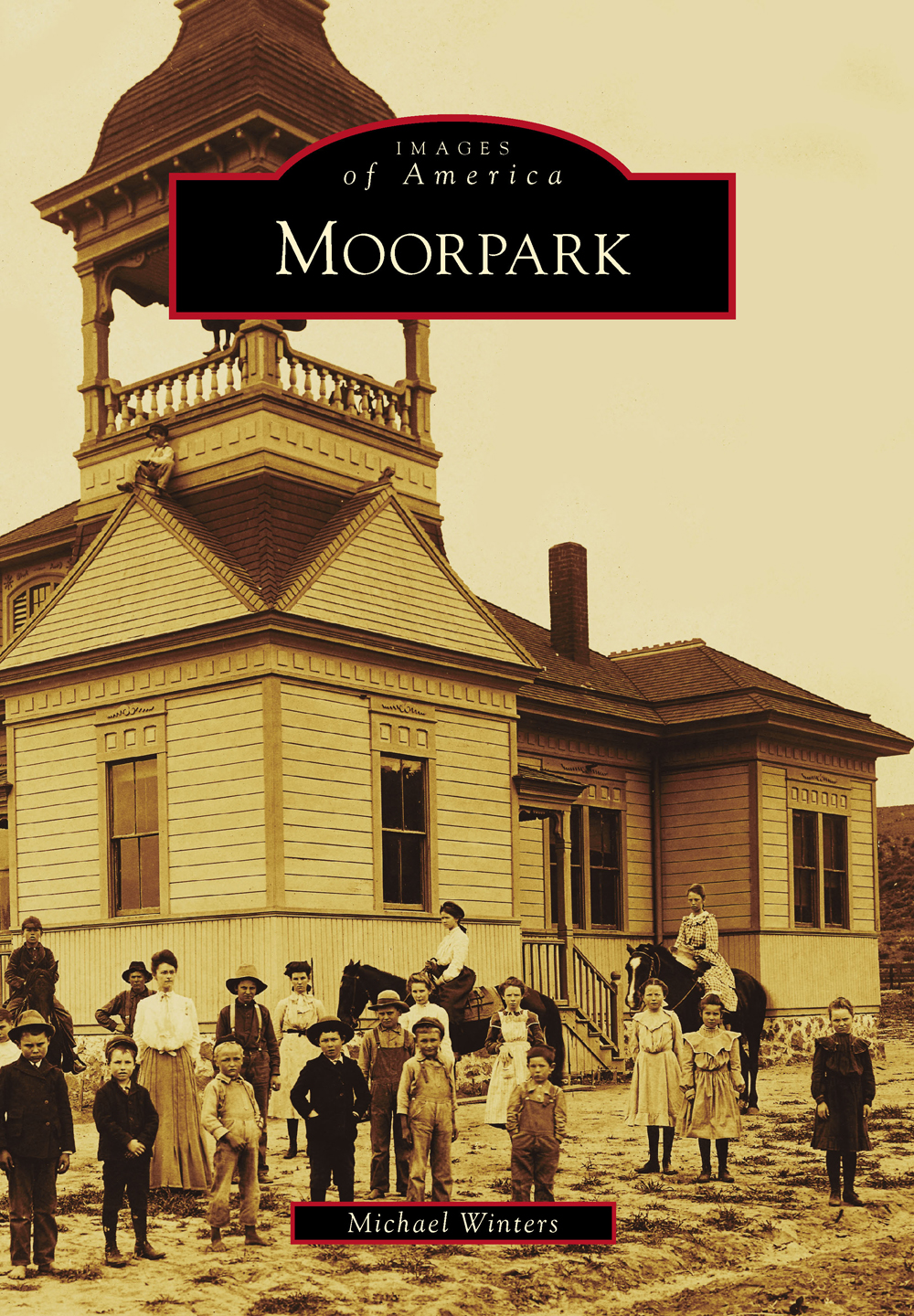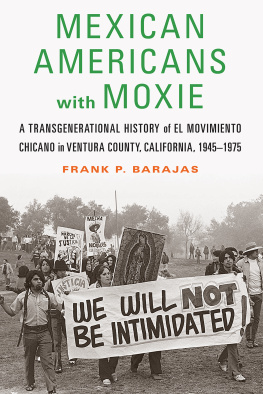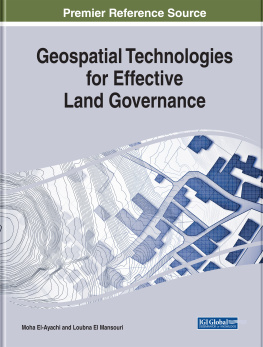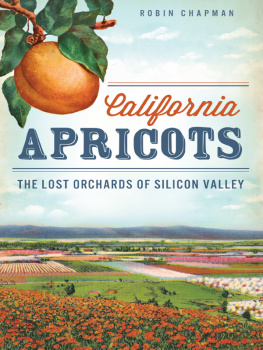
IMAGES
of America
MOORPARK

This birds-eye view of downtown Moorpark was taken around 1911. During this time in Moorparks history, housing was concentrated in the downtown area and, except for the outlying ranches, had not yet moved south of the railroad tracks. The land beyond the Southern Pacific Milling Company warehouse, which would be Poindexter Avenue today, is planted with young walnut trees. (Courtesy Moorpark Historical Society.)
ON THE COVER: Completed in 1896, the majestic Fremontville schoolhouse was originally built on two acres of land donated by the Agoure family near the intersection of Spring and Peach Hill Roads. The school needed to maintain eight students to ensure funding for a public school teacher so enrollment was open to children from surrounding communities. This c. 1904 photograph shows the teacher, Etta Ayers, with the student body. (Courtesy Moorpark Historical Society.)
IMAGES
of America
MOORPARK
Michael Winters

Copyright 2016 by Michael Winters
ISBN 978-1-4671-3449-1
Ebook ISBN 9781439657355
Published by Arcadia Publishing
Charleston, South Carolina
Library of Congress Control Number: 2016938023
For all general information, please contact Arcadia Publishing:
Telephone 843-853-2070
Fax 843-853-0044
E-mail
For customer service and orders:
Toll-Free 1-888-313-2665
Visit us on the Internet at www.arcadiapublishing.com
To my family, Erin, Emma, and Lily, and to all of the residents of Moorparkpast, present, and future
CONTENTS
ACKNOWLEDGMENTS
This book would not have been possible without the support of the Moorpark Historical Society and its board of directorsDavid Schwabauer, Linda Plaks, Patti Reuter, Diana Gould, Chris Childers, Gwyn Goodman, and Bill McMahon. Thank you, to these individuals and also to former board members Charles and Mary Schwabauer, who have worked tirelessly over the past many years to preserve Moorparks history.
A great source of inspiration for this work has been The Moorpark Story and A Diamond for Moorpark by Norma Gunter and Moorpark: Star of the Valley by Janet Scott Cameron. Thank you, to these two authors for their contributions to our city.
Thank you, to Jim and J.J. Birkenshaw, Rick and Linnea Brecunier, Joy and Curran Cummings, and Gwyn Goodman for their generous contributions of images.
Thanks also go to Simi Valley historian Bill Appleton and to Carolyn Phillips, Patricia Havens, and the board of directors of the Simi Valley Historical Society for their generosity in contributing images.
Thank you, to my siblings, Paty, Danny, and Matt, for their lifelong support, and to my parents, Larry and Nancy Winters. I am so glad you stumbled upon that little farmhouse in Home Acres in 1961 that would provide me with so many great memories while growing up.
Lastly, I would like to thank my daughters, Emma and Lily, and my wonderful wife, Erin, who has been a constant source of strength and reason throughout this process. Without her support and understanding, this book would have not been a reality.
The majority of the images used in this work are from the collection of the Moorpark Historical Society. These images have been collected by the society or have been donated from the towns founding families over the past 50 years. Without these images, I would not have been able to complete this project. Thank you, to all of the families who have made it a priority over the years to preserve Moorparks history through their generous donations of photographs and ephemera. Unless otherwise noted, all images appear courtesy of the Moorpark Historical Society archive.
INTRODUCTION
As a teenager growing up in Moorpark, I was bitten with the model railroading bug when I joined the Home Acres 4-H Clubs model railroading project. I soon began brainstorming ideas for a train layout and, since I was interested in history, the project leader suggested I create a layout of old-town Moorpark. Because I was no expert on Moorparks past, I began brushing up on local history by reading my parents copies of Norma Gunters The Moorpark Story (1969) and A Diamond for Moorpark (1975.) Since my mom knew Norma Gunter from working at the bank, she arranged a driving tour with her so I could gain some insight as to what the town looked like in the early years. This trip through downtown Moorpark took no longer than 30 minutes but sparked in me a lifelong love of our city and its rich history.
This work serves to build on the foundations laid by Gunters aforementioned works, as well as on Janet Scott Camerons Moorpark: Star of the Valley (1967.) As these previous works presented readers with a dialogue-rich historical narrative, the purpose of this work is to provide the reader with a more visual representation of Moorparks past through the use of historical photographs and ephemera.
This book contains a mixture of published and never-before-seen pictures of Moorpark and the surrounding areas. They represent the history of Moorpark from the towns humble beginnings through the 1930s. Each of the photographs has been scanned at a high resolution and, even if previously published, will provide the reader with a higher-quality and more appealing historical representation of the town.
As Moorpark was founded 115 years ago, it was very difficult to locate images of the towns founding families. This was especially true in trying to locate images of those Mexican American families who contributed so much to the towns early years. The absence of photographs of this important group of individuals, or of any individuals that played a historically significant role in the towns history, should in no way take away from the many contributions they made to the development of Moorpark.
Moorparks past can be traced back much further than most residents can imagine. Long before the rolling hills surrounding Moorpark had been developed and even before they were being farmed, this area was home to some incredible creatures. In 2005, one of the worlds most complete southern mammoth (Mammuthus meridionalis) fossils was uncovered during excavations in the Meridian Hills housing development just north of downtown Moorpark. This fossilized mammoth skeleton, affectionately referred to as Big M, is now being painstakingly restored at the Santa Barbara Museum of Natural History. This find, however, was not the first mammoth to be discovered in this area. Newspaper accounts from 1928 report that the fossilized remains of another mammoth were excavated that year in the hills surrounding Moorpark.
Many years after the mammoths became extinct, the Chumash lived and traded in the area we now call Moorpark. The Chumash village of Quimisac was located in the Happy Camp region northeast of town while the nearby villages of Shimiji and Taapu (Simi and Tapo) were located in present-day Simi Valley. The Chumash were hunters and gatherers and traveled between villages to trade. According to historians, Quimisac controlled the local trade of fused shale in this region, which was used for tools and projectile points. The largest deposit of fused shale in California is located in Grimes Canyon.
The Chumash lived in familial groups in villages and would make trips to gather seeds, sage, acorns, and other dietary staples. Food was stored in coiled baskets and kept inside dome-shaped thatched dwellings. The Chumash would also embark on hunting trips and used bows and arrows and throwing sticks to take down their prey.
Next page









